A chance to explore the Gough Map, try to help Canterbury Castle and bring medieval animals to life.
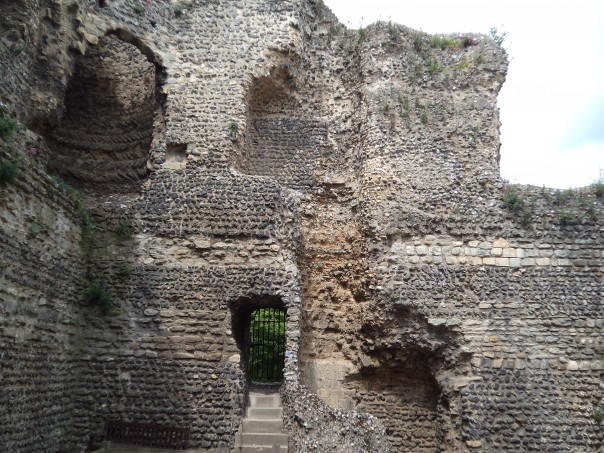
Firstly the news, thanks to Matthew Crockatt’s and Kellie Hogben’s sterling efforts putting up the website and the booking details through Spektrix respectively, conference details and how to book the Centre’s jointly organised events with Canterbury Cathedral Archives & Library and the Christopher Marlowe Statue Project are now both up on the Centre’s website. The first on Monday 18 May ‘Church, Saints and Seals, 1150-1300’ can be found at https://www.canterbury.ac.uk/saints-seals , while ‘The Natural History of the 16th Century and the Works of Marlowe’ to be held on Saturday 20 June is available at https://www.canterbury.ac.uk/marlowe-plants and details of the open lecture on the evening of Friday 19 June, as a prelude to the Saturday conference, will be on display next week. However, as a preview Dr Claire Bartram will be speaking on ‘Performing Husbandry: Book Culture in young Christopher Marlowe’s Kent’. Please do explore the website if these sound of interest to you.
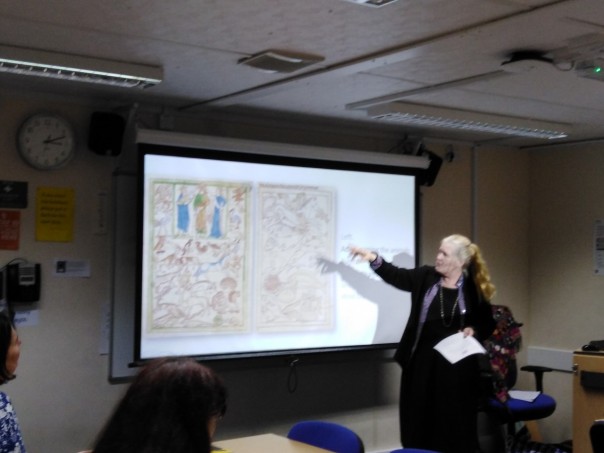
Now to this week, which again apart from teaching has been more about meetings than anything else. For Professor Louise Wilkinson, these have included several on Humanities’ impact cases studies at CCCU for the REF next year, as well as one chaired by Professor Jackie Eales for the Friends of Canterbury Castle. This group is seeking to work with Canterbury City Council to try to bring the castle keep back as a place people, both residents and visitors, can visit, enjoy and learn about regarding its long and somewhat chequered history – from the residence of the sheriff to a prison, and then to a coke store for the neighbouring gas works in Victorian times. Although the proposed carol service in the grounds could not take place this December due to logistical problems, the group was heartened to hear that the Council is seriously considering spending a good-sized sum on it as a way of moving towards reopening the keep in 2021. Other potential funding streams were also discussed and the group hope to launch a website soon with other social media to highlight Canterbury Castle’s national importance and the need to ensure something is done! Again, please watch this space for further developments.
Earlier on Wednesday Jackie Eales had chaired a meeting regarding her proposed ‘Mayflower’ conference on Saturday 5 September. One of the speakers will be Dr Lorraine Flischer (CCCU), who has been researching the activities of certain Canterbury citizens who travelled to the New World during the reigns of the early Stuarts. Others from CCCU who are likely to be involved in the day’s activities include Dr Jane Lovell. This Saturday also coincides with the last of the Centre’s ‘Kentish Saints and Martyrs’ lectures, in this case by Dr Rachel Koopmans at St Thomas’ RC church in Burgate on an aspect of St Thomas of Canterbury’s cult. A programme showing all the lectures that week will be up shortly on the Centre’s website, again under ‘Future Events’, and is a very exciting collaboration with the city’s medieval parish church communities.
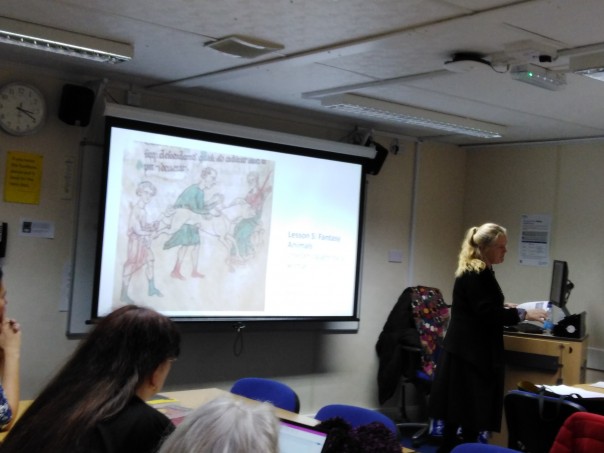
This week I was also fortunate to have the chance to work on the Gough Map project when I met up with Dr Rebecca Warren to explore the counties of Kent and Surrey, and to a lesser extent Sussex, the latter to be looked at in more detail by Dr Mark Gardiner (University of Lincoln). Among the issues we were considering was the way the mapmaker had denoted Canterbury and Rochester and thus their apparent relative importance. As before we were both struck by the prominence given to the River Medway, especially because Rochester Bridge is the only bridge shown in the whole of Kent. Yet given the presumed date of the Gough Map, either side of 1400, this is perhaps not surprising because the bridge, having become very dilapidated, was rebuilt in stone in the late 14th century, making it an extremely important and visible feature in the late medieval landscape.
Another aspect that we spent some time considering was the mapmaker’s much greater interest in the river systems that flowed north compared to those flowing south to the sea. Indeed, we think that one of his rivers in relation to the nearest marked settlement is actually flowing the wrong way, ie northwards rather than to the south. Moreover, and on the grounds that the rivers are really the only physical features for Kent and Surrey and thus the way that the mapmaker located places, we felt that the red line with its distances between places was potentially a substitute for scale and has nothing to do with routeways at all.
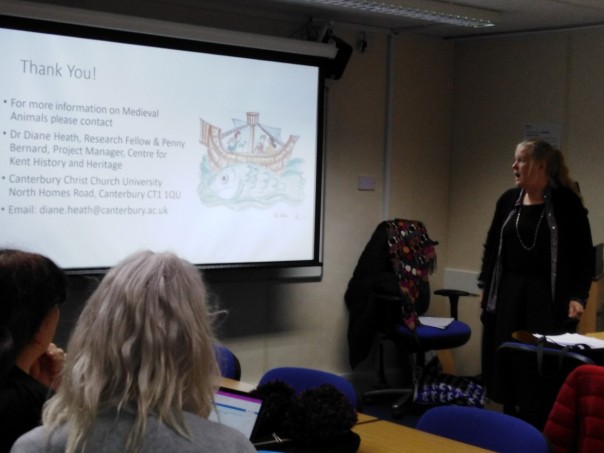
We also looked at other issues but more on this when I have had a chance to discuss these Home Counties with Mark, and instead I want to turn to Dr Diane Heath’s workshop for trainee primary school teachers using her and Penny Bernard’s ‘medieval animals’ project. As you may remember, as part of their funding bid they are seeking to develop teaching resources for Key Stage 1 that involve exploring how medieval animals from ‘The Bestiary’ can be used to engage children’s imagination, to help them think about emotions and to develop their literacy, art, history and science in a way that is fun.
To that end Clare Stow (Senior Lecturer in Primary Teacher Education) had kindly invited Diane to talk to her student teachers in their History session. Diane introduced the students to the medieval concept of the bestiary, its various forerunners and why many theologians saw animals as a means to teach people Christian ideas and morals in the Middle Ages. She also highlighted that such animal images were not confined to manuscripts but were (and are) to be found in many churches including both inside and outside Canterbury Cathedral, albeit perhaps the most famous are the ones in the crypt. Even though the messages theologians wanted people to take from these animals and their characteristics were generally serious, medieval people enjoyed humour and were equally prepared to have animals with characteristics that we might consider rude today – I’ll leave you to find out about the ‘bonnacon’.
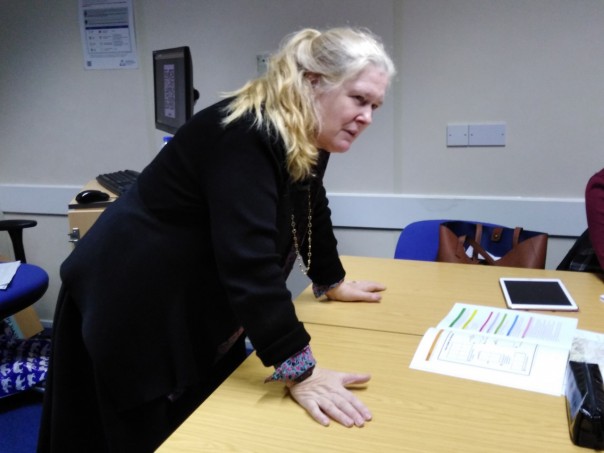
Having got the students thinking about this range of real and what we would see as mythical creatures, Diane went through the various lesson plans she has devised for the teacher’s guidebook and how they relate to the little work books that the pupils would produce for themselves as members of teams. For example, in lessons 3 and 4 the pupils would research real animals from the bestiary, each team concentrating on their animal to explore what we know about it and how this information compares to that contained in the bestiary. This would he deployed to design a poster that they could then talk about to the rest of the class.
To test out some of these ideas, Diane asked the students to discuss amongst themselves how this strategy might work using these ideas and materials, and this provoked a series of discussions at the various tables in the seminar room. Furthermore, so that the students could continue to give Diane suggestions and comments, a ‘pebblepad’ was set up and before the end of the session plenty of posts had arrived.
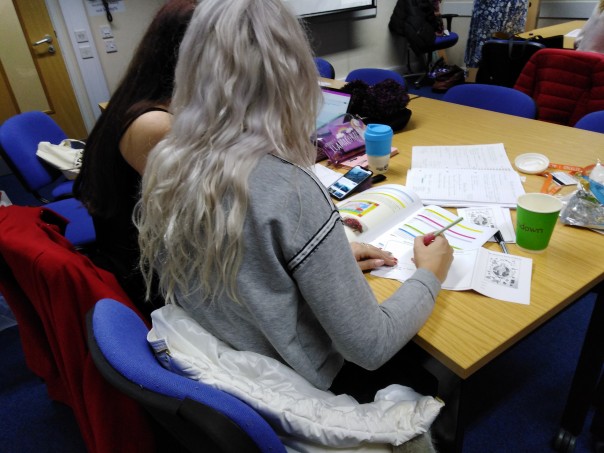
To show her appreciation of this opportunity and because it was the last session before the Christmas break, Diane provided refreshments for all, and the workshop ended with a good helping of festive spirit!
 Centre for Kent History and Heritage
Centre for Kent History and Heritage Sheila Sweetinburgh
Sheila Sweetinburgh 975
975

